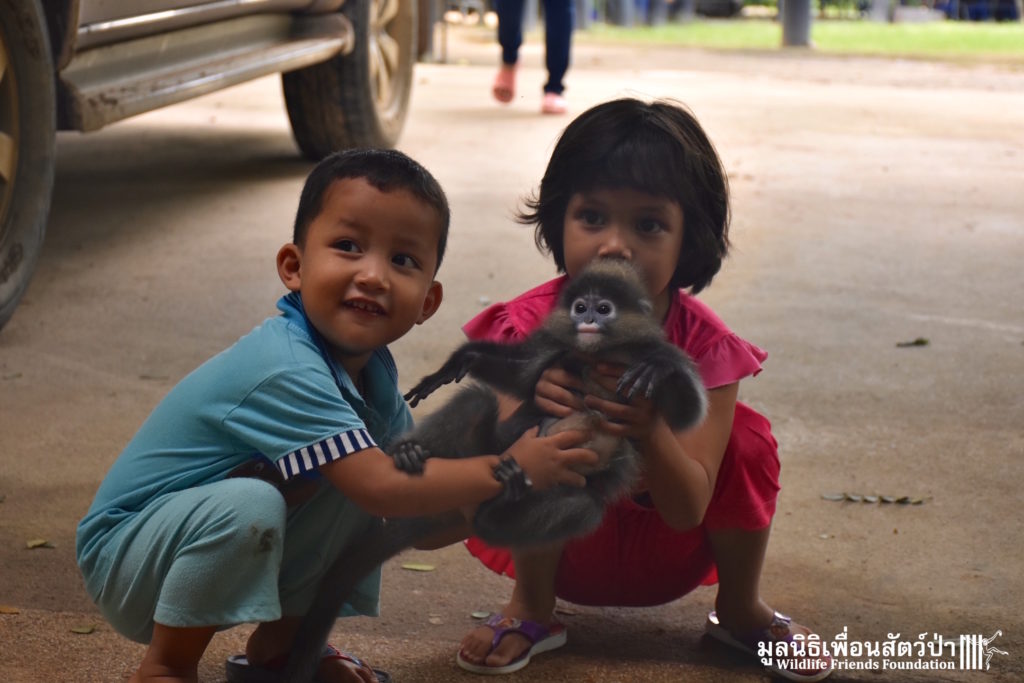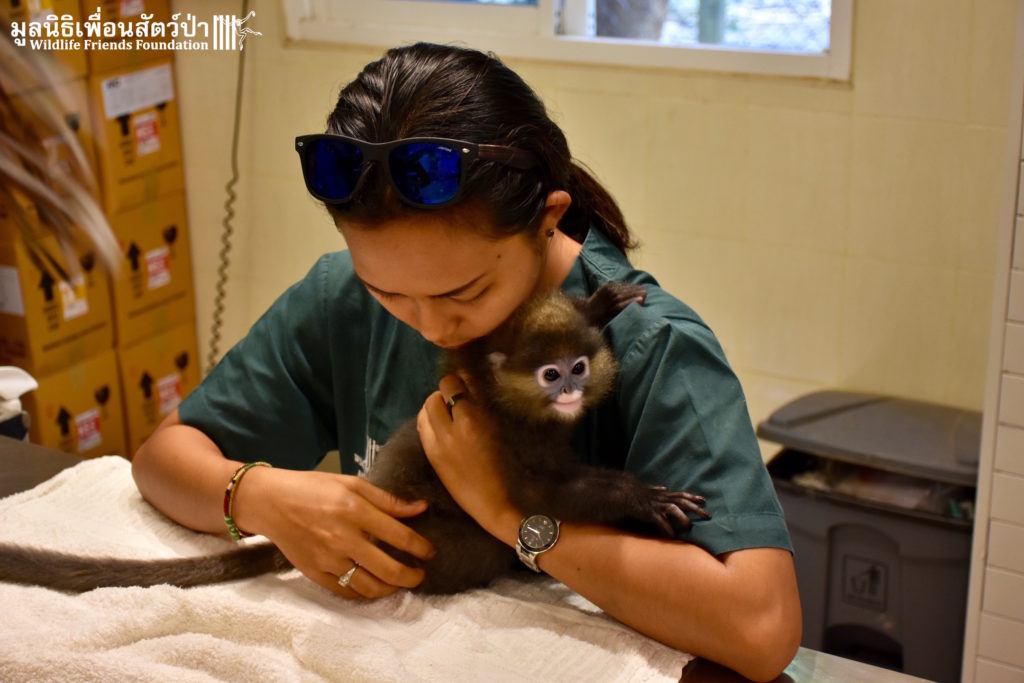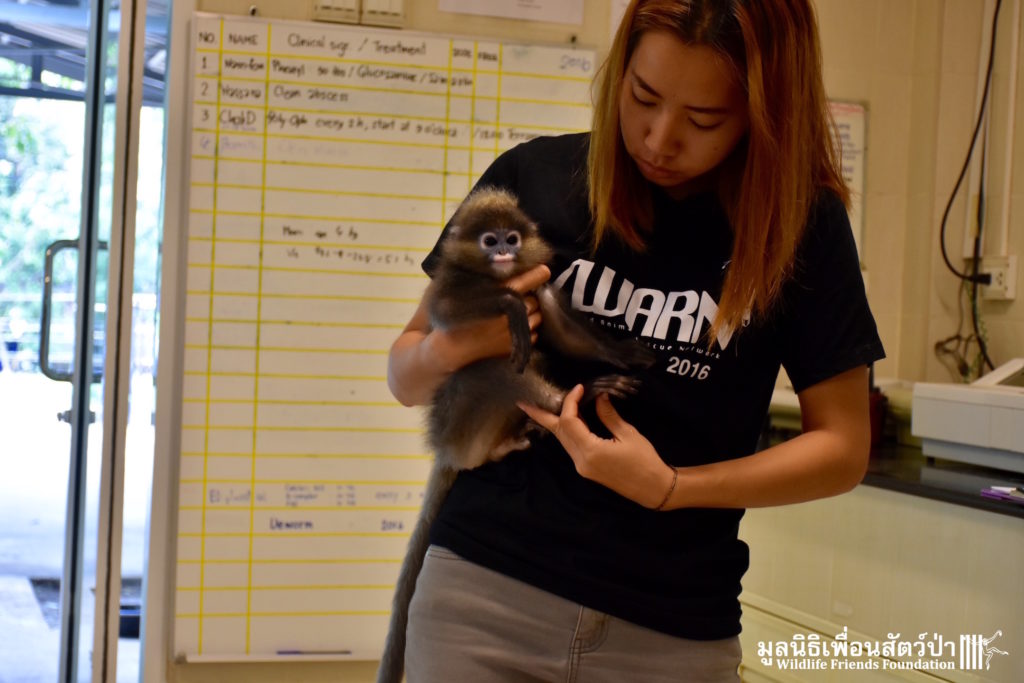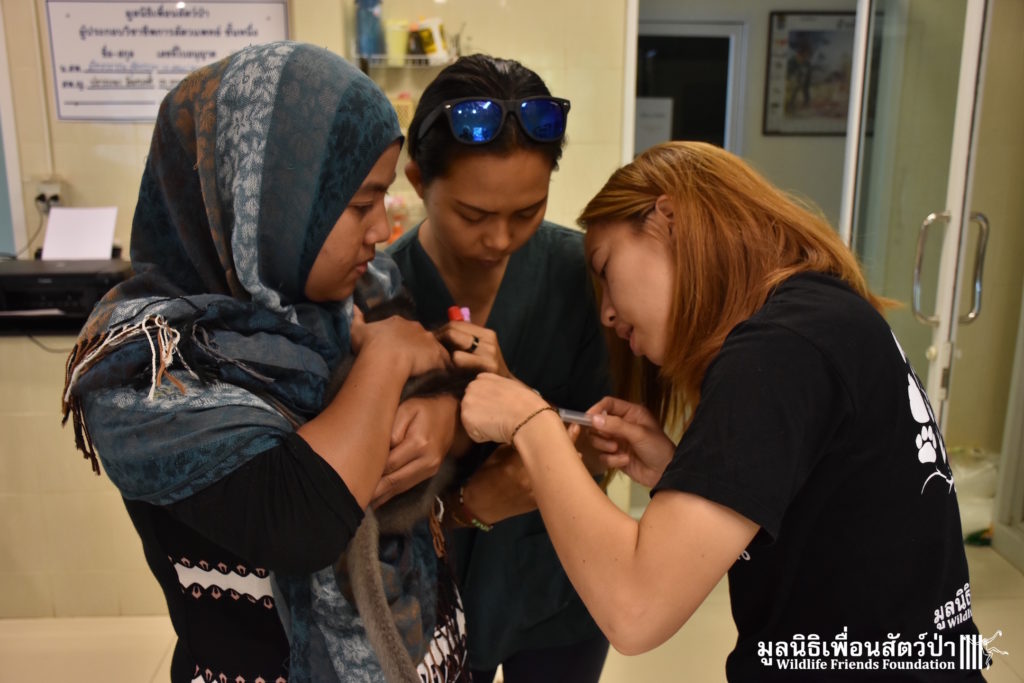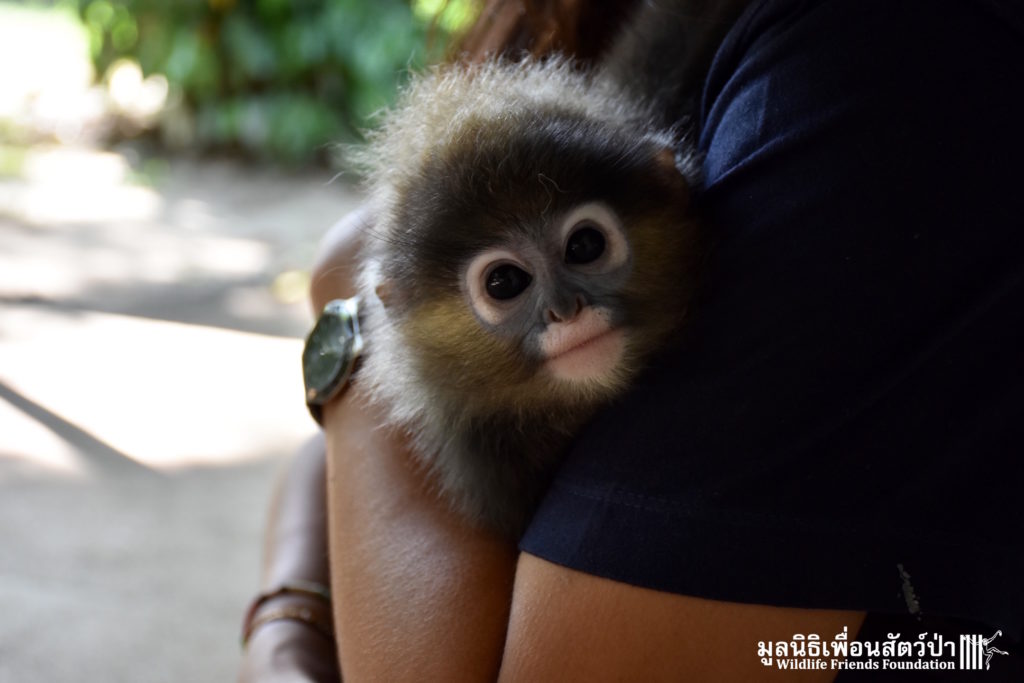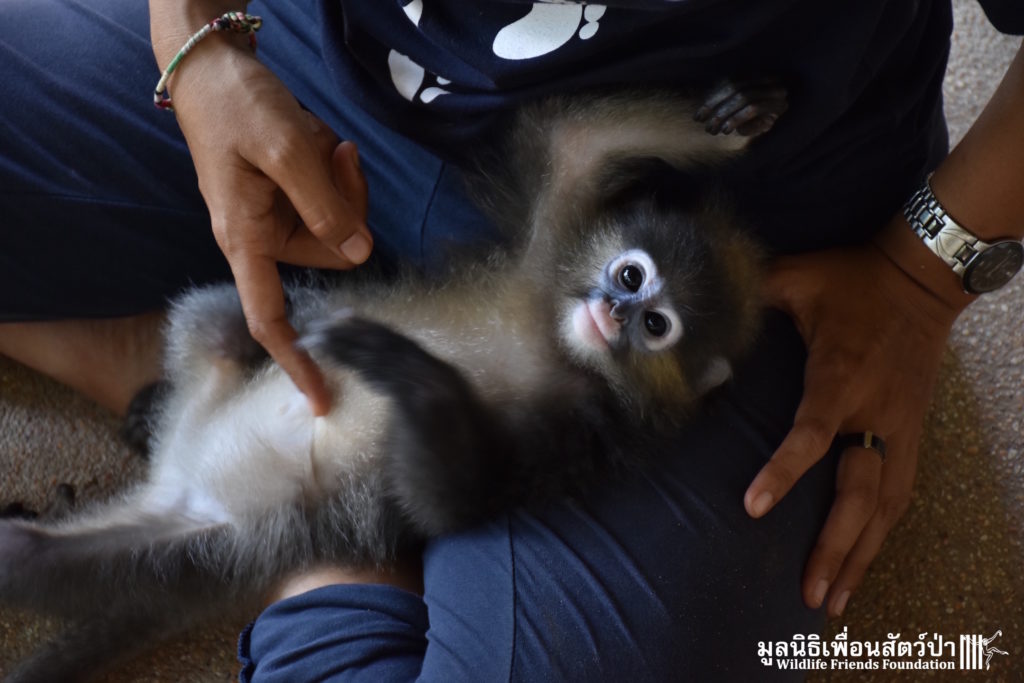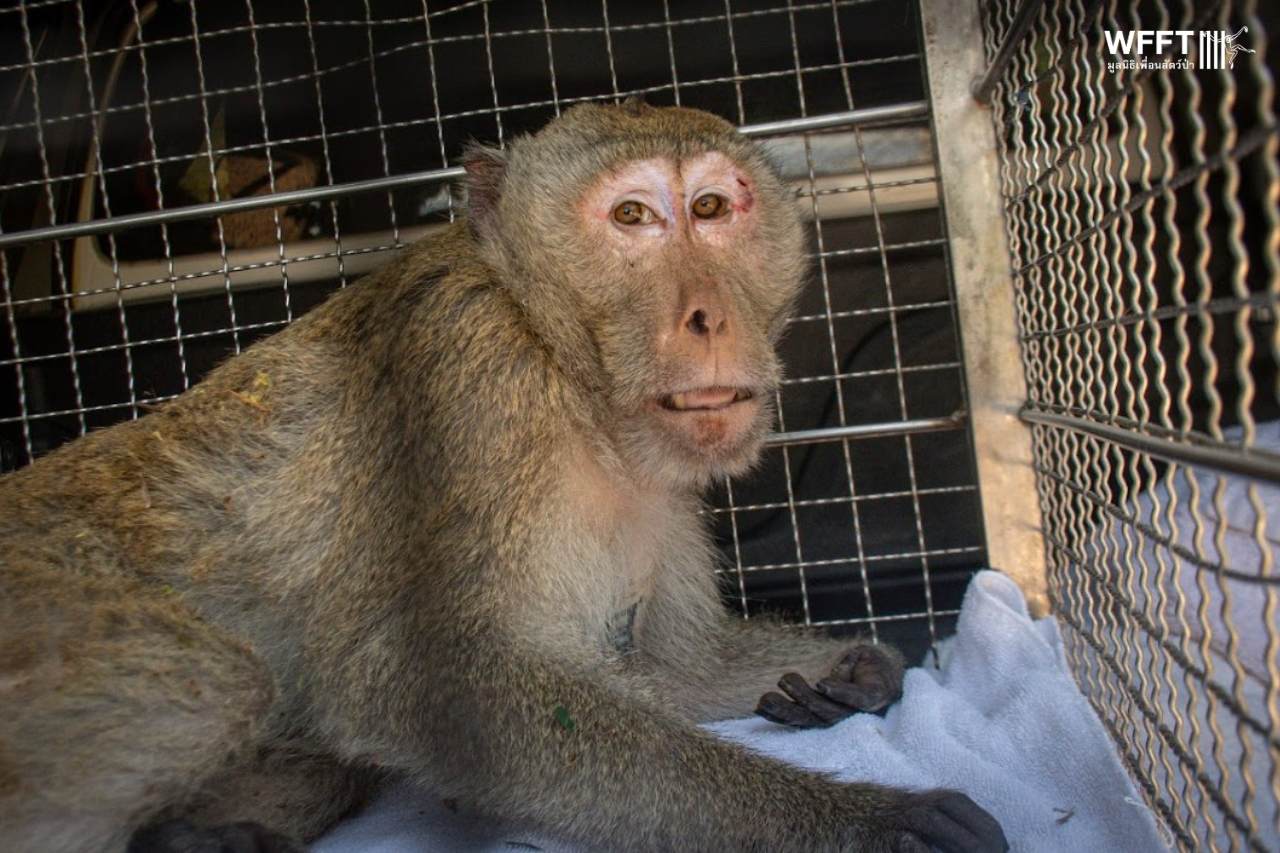It's time to take action—learn how you can help stop this exploitation and protect slow lorises from further harm.
Another Orphan Arrives at WFFT….
Yesterday we had yet another addition to the growing number of orphaned infants at the WFFT Wildlife Rescue Centre. A family drove 12 hours from southern Thailand to seek care and hand over a 7-month old female langur that they had been keeping as a pet. Her name is Pattani. She had begun to show signs of malnutrition and bone deficiencies. Her ability to climb and walk have been greatly affected by her life in captivity, she moves around like a little old lady, barely being able to straighten her arms and legs. It is clear Pattani was not flourishing while living in such a captive environment.
The IUCN Red List of Threatened Species lists the dusky langur as Near Threatened (NT). Being hunted for food and the pet trade are major threats, as is habitat loss and degradation, due to expansion of agricultural practices and urbanization throughout its range. Considering the extensive habitat loss that has taken place within the range of the species, there is reason to believe that this species is in decline. This species plays a major role in the ecology of the forest, providing ecosystem services in their forest habitats. They act as seed dispersers of the plants and fruits they eat, enhancing forest regeneration and connectivity. They also have an impact on the food chain as they serve as prey for various other species of animals such as leopards.
We hear countless stories like this one and while it is clear that the family ‘loved’ her and may have even been attempting to save her from a hunter or poacher who had most likely murdered her mother and family, in the bigger picture it is still damaging to this little one. This species is highly susceptible to stress in captivity and providing a suitable diet is often difficult. Pattani was being fed an incorrect diet of strictly fruit rather than the leafy greens, roots, grass, flowers and only some fruits that langurs require. This can cause serious health issues down the line and is all the more reason to keep them in the wild, as it is often the reason behind many captive infant langur deaths.
Infant langurs require significant amounts of attention and connectivity to their birth mother specifically as it is crucial to their development. In the wild they stay clinging to their birth mother for the first 2 years of their lives and only then will other females act as secondary caretakers. Love for Earth’s creatures is a beautiful thing but is best done from a place of information and selflessness, always putting what is best for the animals above everything else.
We respect the fact that this family came to the decision that it was best for this sweet girl to move to the WFFT hospital so that she can be properly cared for by knowledgeable and skilled professionals. We were humbled by the fact that they believed we were the best option and drove 12 hours with their children to bring her to us. We will do everything in our power to ensure that the rest of her life is spent with as much care and as little stress as possible. And as always we will keep you updated!

